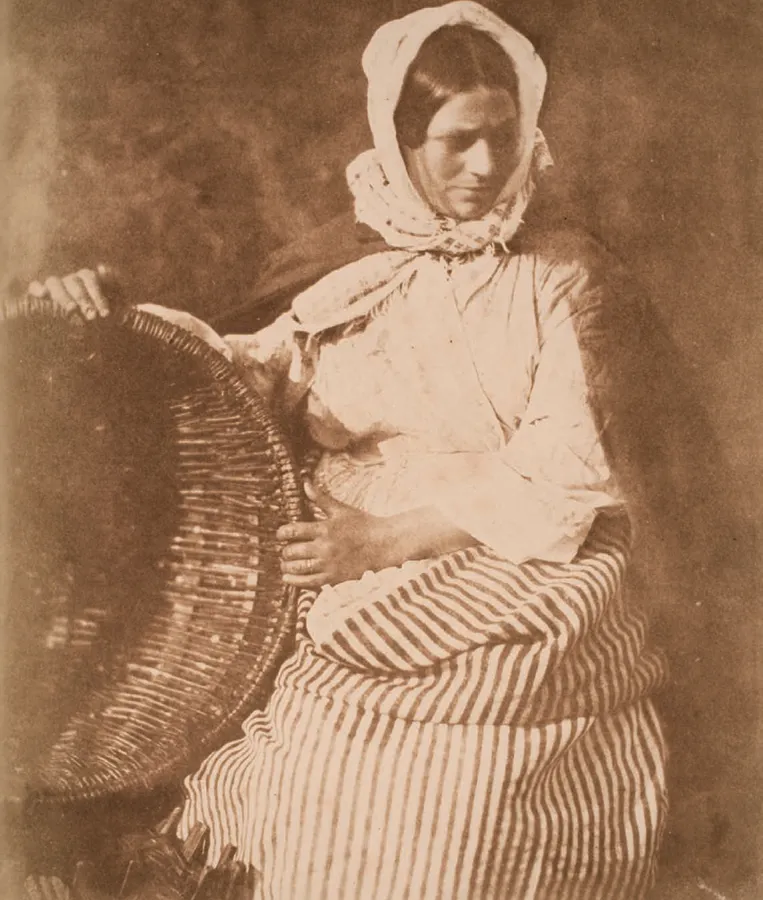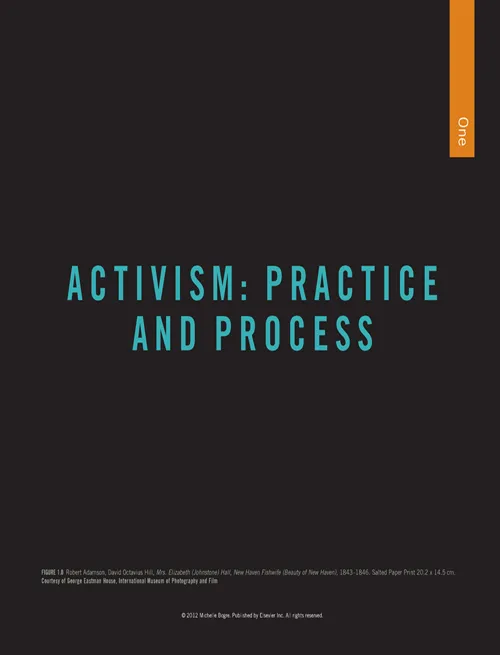![]()
Philosophy and psychology
“The contemplation of things as they are without error without confusion, without substitution or imposture is in itself a nobler thing than a whole harvest of inventions.”1
Sir Francis Bacon
Since the documentary genre comprises the majority of activist photography, it is important to define documentary for the purposes of this book. The definition of documentary photography in the twenty-first century is complex, multilayered, and nuanced. It is both process and aesthetic and applies to a broad range of imagery, from traditional, straight reportage-type images to the manipulated faux documentary images that appear on gallery walls. To some degree, all photography is documentary because all photographs document something. Each photograph is evidence of something that appeared in front of the camera. Walker Evans qualified the difference between a photographic document and documentary photography: “When you say documentary, you have to have a sophisticated ear to receive that word. It should be documentary style, because documentary is police photography of a scene and a murder … that’s a real document. You see, art is really useless, and a document has use. And therefore, art is never a document, but it can adopt that style. I do it. I’m called a documentary photographer. But that presupposes a quite subtle knowledge of this distinction.”2
As documentary practice has evolved, and as our critical understanding of how images function has become more sophisticated, Evans’ distinction resonates. Even though documentary applies to many types of photography today, the word documentary to describe photography dates only to the early to mid-1900s. Most historians credit Scots filmmaker and critic John Grierson with first applying the word documentary in1926 to describe Robert Flaherty’s nonfiction film Moana about the daily life of a Polynesian youth. Grierson noted that the film presented facts without any fictional overtones,3 suggesting that authenticity is fundamental to documentary work, that documentary suggests an interest in the actual, not the subjective, and acknowledging that documentary’s Latin word root is doc, doct, or docere, meaning “to teach” or “instruct.”4 Grierson elaborated, describing documentary as “… the selective dramatization of facts in terms of their human consequences,”5 also setting the stage for the subsequent discussions about documentary and the myth of objectivity. In 1938, photographer Edward Steichen, when reviewing some photographs from the Farm Security Administration’s (FSA) Photography Unit, wrote that the photographers produced a series of “… the most remarkable human documents that were ever rendered in pictures” because they were so direct that “they made many a citizen wince,” leaving the viewer with a “feeling of a living experience” not soon forgotten.6 As Grierson did for film, Steichen defined a new genre of photography—documentary—that, although fact based, succeeds best when it informs both the intellect and the emotions. The word documentary stuck because it aptly described the type of social reform photography common in America in the 1930s, represented by the early social reform photographers such as Jacob Riis and Lewis W. Hine. Their photographs were rooted in the fact of the thing (poverty, horrific living conditions, child labor), but the photographers knew that they needed to elicit emotion from their viewers because they understood that emotion provokes action.7 They also understood that for an emotion to be valid the photograph must present and represent actual facts in a vivid and credible manner.up8
The quest for a definition of documentary continued. In 1938, the word made its way into the lexicon of photographic history when Beaumont Newhall identified documentary as a means, not an end—an approach to a photograph, not the photograph itself. Newhall, then head of the Department of Photography at the Museum of Modern Art in New York City, wrote that the documentary photographer is “first and foremost … a visualizer. He puts into pictures what he knows about, and what he thinks of, the subject before his camera. … But he will not photograph dispassionately. … He will put into his camera-studies something of the emotion which he feels toward the problem, for he realizes that this is the most effective way to teach the public he is addressing. After all, is this not the root-meaning of the word ‘document’ (docere, ‘to teach’)?”9 In 1972, the Time Life Library of Photography’s volume on documentary photography defined documentary as “a depiction of the world by a photographer whose intent is to communicate something of importance — to make a comment—that will be understood by the viewer.”10 In his book Doing Documentary Work, psychiatrist Robert Coles riffs more poetically on the documentary genre:
And so it goes then—doing documentary work is a journey, and is a little more, too, a passage across boundaries (disciplines, occupational constraints, definitions, conventions all too influentially closed for traffic), a passage that can become a quest, even a pilgrimage, a movement toward the sacred truth enshrined not only on tablets of stone, but in the living hearts of those others whom we can hear, see and get to understand. Thereby we hope to be confirmed in our own humanity—the creature on this earth whose very nature is to make just that kind of connection with others during the brief stay we are permitted here.11
He will put into his camera-studies something of the emotion which he feels toward the problem, for he realizes that this is the most effective way to teach the public he is addressing.
In his essay from Engaged Observers in Context, Brett Abbot defines documentary as a term “… used loosely to refer to a wide variety of practices in which the subject matter of a picture is at least as important as its manner of portrayal.”12 He dissects the complexity of the genre, noting that it applies to a “remarkably diverse array of pictures, including landscape and architectural documentation of the nineteenth century … Western survey photography … socially engaged work … portrait projects … ethnographic studies; street photography; war photography of all periods; mug shots and crime-scene pictures.”13 If we accept Abbot’s description, we’re back to the notion that a lot of photography is, or can be considered, documentary, keeping in mind Evans’ subtle distinction.
Even with this expansive definition, traditional documentary—unvarnished, straight, and unrepentant in its quest for truth—has been under attack for more than a decade by postmodern photographic critics and theorists, most notably Martha Rosler and Allan Sekula. The general assertions that photographs are not simple records, that they are not evidence, and that they can’t be objective lead critics to challenge the very nature of documentary work. If, as critics claim, all photographs are suspect, contextual, complex layers of symbols and meanings laden with the photographer’s hidden agenda, then how can documentary be truthful and representational? Critics claim that straight photography is boring and passé. Yet in spite of this criticism, documentary photography is thriving, and documentary photographers are still faithful to the notion of a truth, although maybe not the truth, and still pledge an allegiance to the idea that photographs can and should be rooted in the moment, not directed, not staged, and not manipulated. Even the sincerity of wanting to effect social change does not shield documentary work from the savages of criticism; rather it evokes another accusation that the documentary photographer who photographs a foreign culture perpetrates a visual form of colonialism. Rosler, in particular, criticized the idea of social documentary as a practice because it was not revolutionary enough: “Documentary photography has become much more comfortable in the company of moralism than wedded to a rhetoric or program of revolutionary polities.”14 In her seminal 1981 essay, In, Around, and Afterthoughts (On Documentary Photography), Rosler claimed that documentary photography doesn’t ever “change” anything; rather it simply transfers information about a “group of powerless people” (the subjects; otherwise, they wouldn’t be photographed) to a much more powerful group (the elite gallery goers or viewers). “The exposé, the compassion and outrage, of documentary fueled by the dedication to reform has shaded over into combinations of exoticism, tourism, voyeurism, psychologism, and metaphysics, trophy hunting—and careerism…. The liberal documentary assuages any stirrings of conscience in its viewers the way scratching relieves an itch and simultaneously reassures them about their relative wealth and social position; especially the latter, now that even the veneer of social concern has dropped away from the upwardly mobile and comfortable social sectors.”15
Only those born into or those from a culture or community can truly understand that cultureor community, or so it goes; hence, only the insider has the right to photograph inside that culture. This specious argument ignores the reality that insider truth is not necessarily more accurate than outsider truth. Misrepresentation, intrusion, and exploitation are as likely to occur when an “insider” photographs as when an “outsider” does. In fact, the outsider by the very nature of being an outsider may be more cognizant of the danger of exploitation. “There is an unsigned cont...


